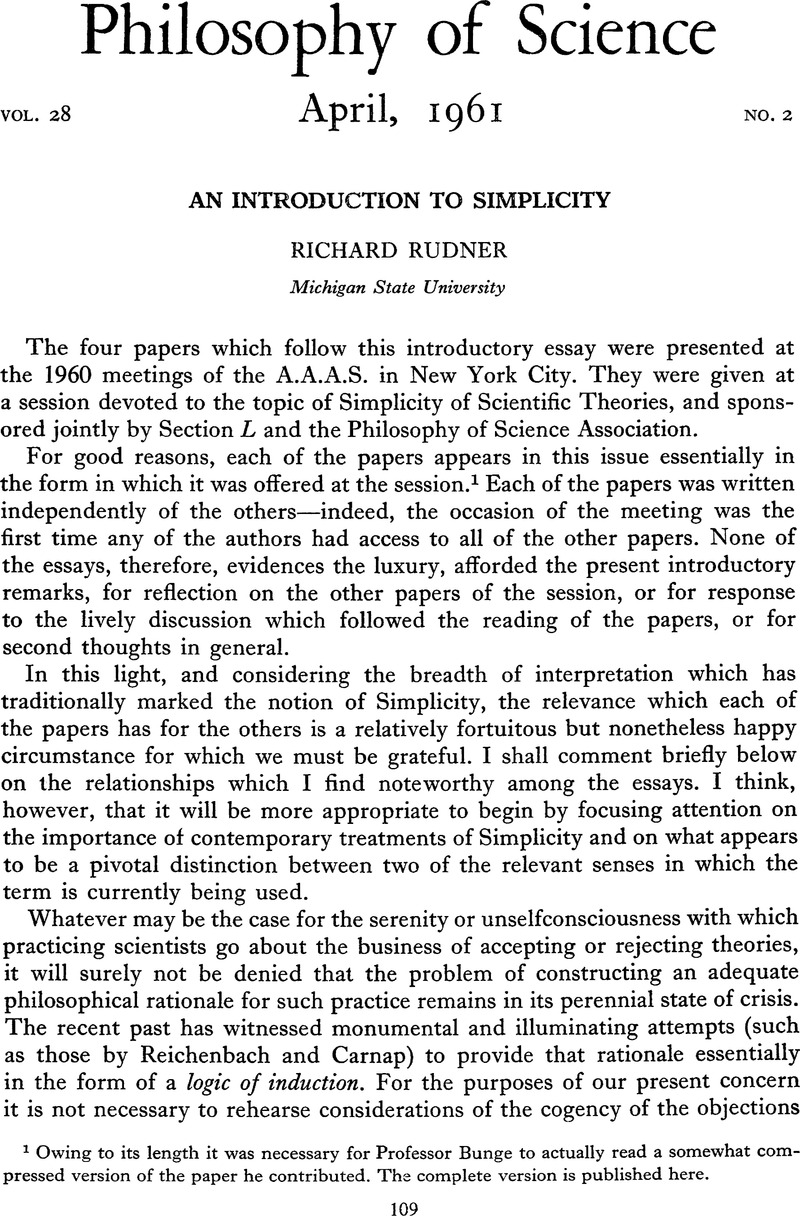Crossref Citations
This article has been cited by the following publications. This list is generated based on data provided by Crossref.
Ackermann, Robert
1963.
A Neglected Proposal Concerning Simplicity.
Philosophy of Science,
Vol. 30,
Issue. 3,
p.
228.
Silvers, Stuart
1964.
Discussion: Some Comments on Quine's Analysis of Simplicity.
Philosophy of Science,
Vol. 31,
Issue. 1,
p.
59.
Slaght, Ralph L.
1970.
Induction, Acceptance and Rational Belief.
p.
186.
Purtill, Richard
1970.
The Purpose of Science.
Philosophy of Science,
Vol. 37,
Issue. 2,
p.
301.
Gutting, Gary
1972.
Einstein's Discovery of Special Relativity.
Philosophy of Science,
Vol. 39,
Issue. 1,
p.
51.
Maxwell, Nicholas
1972.
A Critique of Popper's Views on Scientific Method.
Philosophy of Science,
Vol. 39,
Issue. 2,
p.
131.
Maxwell, Nicholas
1974.
The Rationality of Scientific Discovery Part I: The Traditional Rationality Problem.
Philosophy of Science,
Vol. 41,
Issue. 2,
p.
123.
Hooker, C. A.
1974.
Systematic Realism.
Synthese,
Vol. 26,
Issue. 3-4,
p.
409.
1974.
Introduction to stratificational linguistics.
Lingua,
Vol. 34,
Issue. 2-3,
p.
235.
Fales, Evan
1978.
Theoretical Simplicity and Defeasibility.
Philosophy of Science,
Vol. 45,
Issue. 2,
p.
273.
Klosterman, Richard E.
1978.
Foundations for Normative Planning.
Journal of the American Institute of Planners,
Vol. 44,
Issue. 1,
p.
37.
Cornman, James W.
1980.
Skepticism, Justification, and Explanation.
p.
225.
Wolfson, R. J.
1981.
Philosophy in Economics.
p.
33.
Crisci, Jorge V.
1982.
Parsimony in evolutionary theory: Law or methodological prescription?.
Journal of Theoretical Biology,
Vol. 97,
Issue. 1,
p.
35.
Davis, John S.
1985.
Empirical Foundations of Information and Software Science.
p.
217.
Flannery, Maura C.
1991.
Science and aesthetics: A partnership for science education.
Science Education,
Vol. 75,
Issue. 5,
p.
577.
2003.
Enterprise Information Portals and Knowledge Management.
p.
137.
2010.
The Greening of Petroleum Operations.
p.
795.
Anduaga, Aitor
2010.
Crustal layering, simplicity, and the oil industry: The alteration of an epistemic paradigm by a commercial environment.
Studies in History and Philosophy of Science Part B: Studies in History and Philosophy of Modern Physics,
Vol. 41,
Issue. 4,
p.
322.
2012.
Green Petroleum.
p.
553.


